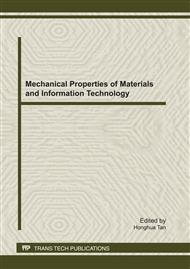p.266
p.273
p.280
p.287
p.293
p.300
p.305
p.311
p.318
Studies on SiO2/TiO2 Complex Film of the Filter Material Carrier and its Photocatalytic Features
Abstract:
The nano-SiO2/TiO2 complex film was used to implement modification of the surface on the sintered filter material of coal refuse. In the photocatalytic reactor, methyl orange was taken as the response substrate to test the photocatalytic activity and the influence of the different Si/Ti ratios of the complex film on the photocatalytic activity of modified filter material. The Langmuir-Hinshelwood dynamics model was applied to describe the dynamic process during which multiphase photocatalytic modified filter material disassembled the methyl orange. The results indicated that the initial concentration, pH value, aeration illumination condition and the Si/Ti ratios of the complex film were the major influence factors of the efficiency of photocatalytic degeneration. In the acidic environment, and on the illumination and aeration conditions, when the initial concentration of the methyl orange solution was 6mg/L and the Si/Ti ratio was 1/39, the SiO2/TiO2 complex film was used to decolor the methyl orange, then the decolorization rate was over 99.8% after 2h.
Info:
Periodical:
Pages:
293-299
Citation:
Online since:
September 2011
Authors:
Price:
Сopyright:
© 2012 Trans Tech Publications Ltd. All Rights Reserved
Share:
Citation:


